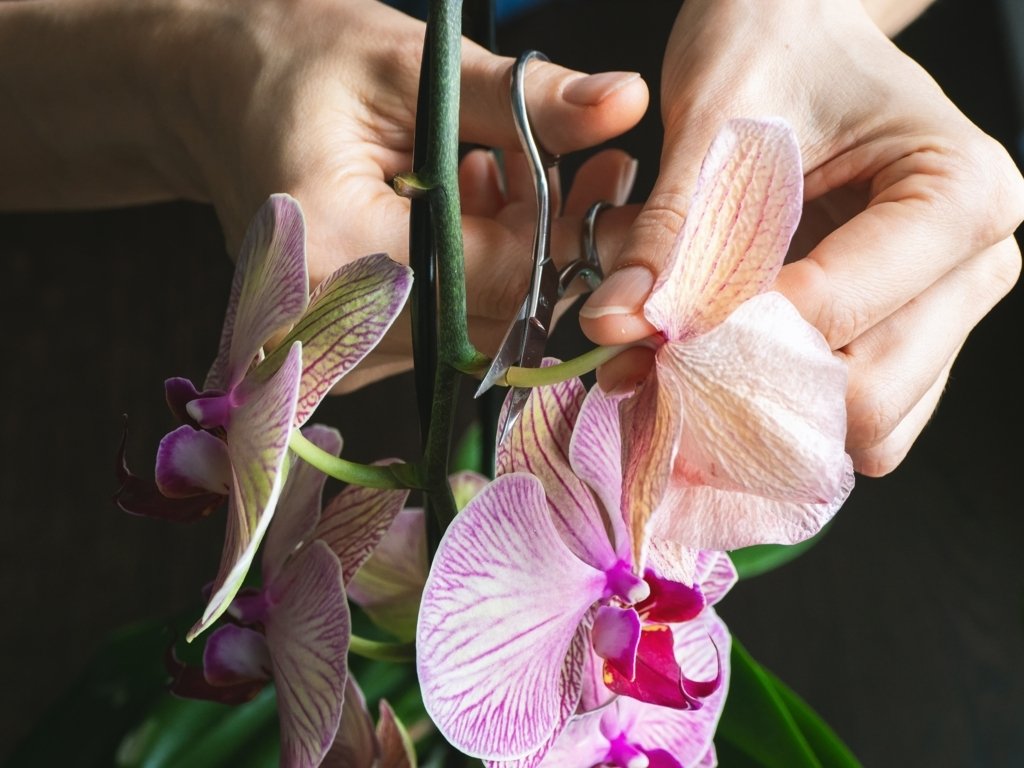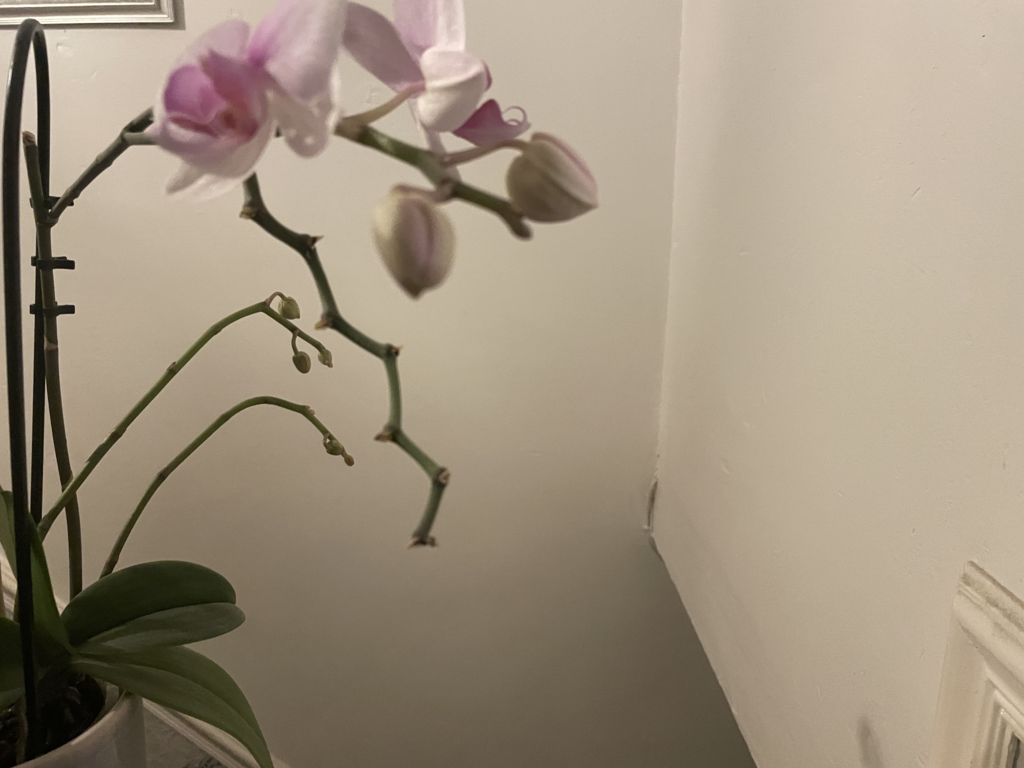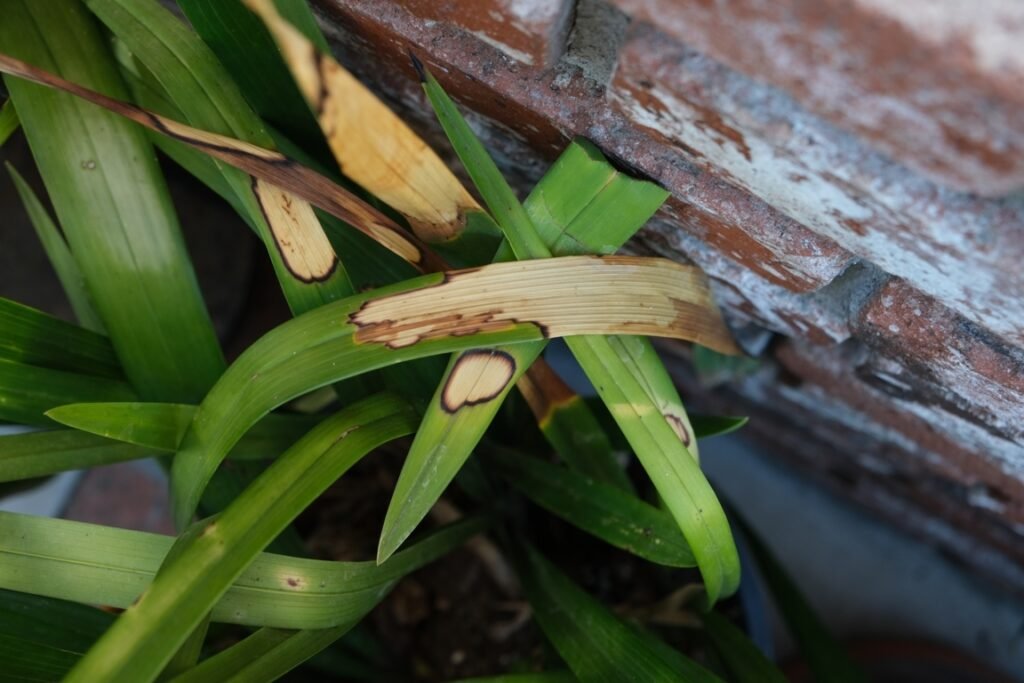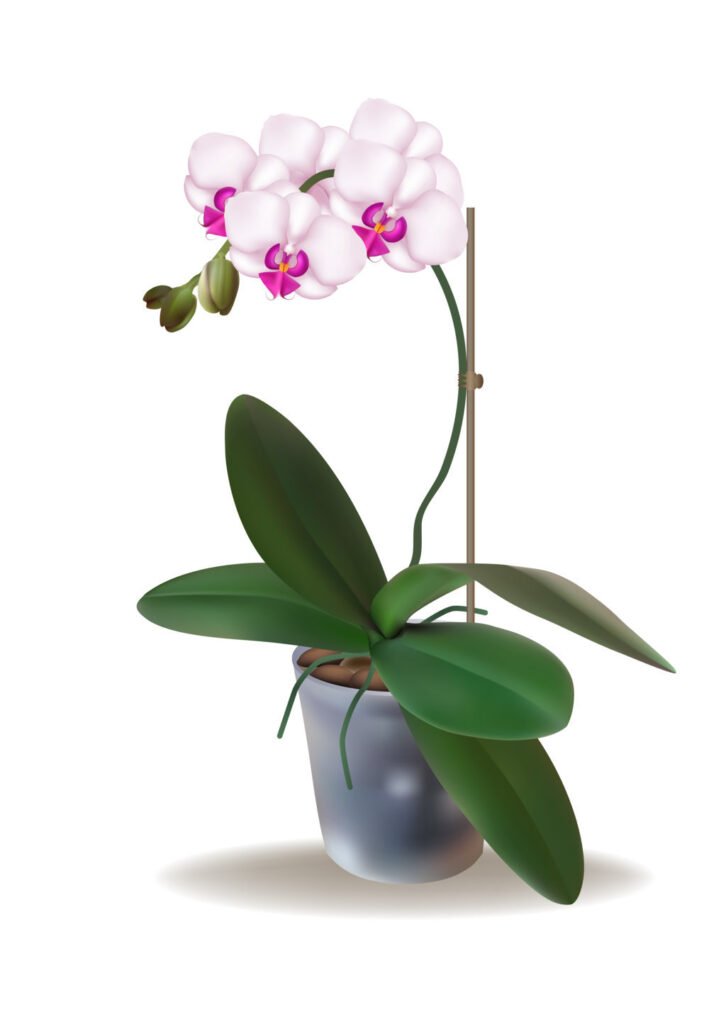One of the most common orchids people start with is the Phalaenopsis orchid, also known as the moth orchid. It’s a relatively easy orchid to care for compared to other species, and it fits most conditions found in homes. As long as you give them enough light, water and feed, they should bloom prolifically! If you’re wondering how to make an orchid grow a new spike, you can find out in a few steps.
You might find that your orchid is throwing out new leaves but not new flower spikes. If this isn’t desirable for you, then let’s explore how you can promote the growth of new flower spikes instead. For younger orchids, it might be a good idea to encourage the development of leaves instead, ensuring they are established and healthy.

How To Make An Orchid Grow A New Spike
Fertilizing
When your Phalaenopsis orchid is blooming, you should hold off on feeding it for a while – until it drops its last flowers. Fertilizing flowering orchids can promote the growth of foliage instead of the development of the flower buds, which may cause the flowers to drop early. This isn’t desirable for most people who grow them ornamentally.
After the last flower drops, you can begin fertilizing the orchid once a month with a fertilizer made for orchids. Ordinary fertilizers may not be suitable for your orchids, as they may have unsuitable NPK (Nitrogen, Phosphorous and Potassium) ratios. You can usually find these orchid fertilizers in your local garden centres or order them online for a low price.
Make sure to follow the instructions on the fertilizer, as you don’t want to overfertilize your orchid – otherwise, this can burn its roots and kill it. If you think you have overfertilized your orchid, the best thing to do is to try and drain as much of the fertilizer out of its roots as possible. You can do this by submerging the orchid underwater for a few minutes, which should hopefully drain as much fertilizer as possible.
Importance of Fertilizer
To many people, fertilizer may seem optional when taking care of plants. This isn’t true at all, and the majority of potted plants will suffer or not grow as well without applications of fertilizer. Unless you have recently repotted the plant, you should be fertilizing it regularly. With orchids, this should be around once a month after the flowers drop. The phosphorous and nitrogen will help to grow new flower spikes, allowing them to throw out more blooms for you!
Pruning
When the flowers on your orchids drop, you have three choices. You can either leave the flower spike in place to allow new blooms to develop on it – this most likely won’t produce blooms, or the flowers will be much smaller if it does.

Another choice is to prune the flower spike, which can promote the growth of a new spike. This will only work for Phalaenopsis orchids and is only partially guaranteed to work. If you’re going to do this, make sure that you use sterile pruners. If they’re not sterile, they can pass pathogens on to other parts of the orchid, which can lead to the death of the orchid. You can sterilize your pruners with a cloth and rubbing alcohol.
One of the most recommended methods to promote a new flower spike growing on your orchid is to completely remove the flower spike using sterile pruners. It should be clipped about half an inch from the base of the flower spike. This gives the orchid the best chance to grow a new flower spike and develop healthy roots. If your orchid is not Phalaenopsis, then this is the best method.
Watering
Without a doubt, watering is one of the essential factors in getting a new flower spike on your orchid to develop. If your orchid is not receiving enough water (or is getting too much water), it can cause stress, leading it to drop flowers.

You need to find the right balance for your orchid. I like to do this by testing the moisture of the soil frequently; you can do this by sticking your finger an inch deep into the soil. You should hold off on watering if it’s soggy until it dries out slightly. Never let your orchid get too completely dry.
For Phalaenopsis orchids, they should be watered around every 10-14 days. Other species of orchids may require less watering or more frequent watering. It’s best to research your specific species of orchids. Phalaenopsis orchids are found in tropical rainforests with high humidity and lots of tree cover. Their leaves are angled to direct water away from the crown, so their water demand is naturally quite low.
Underwatering
It’s important that you don’t underwater your orchid when trying to induce the growth of a new flower spike. Orchids can suffer from underwatering just as much from overwatering. Many plants, such as orchids, cannot handle dry conditions for an extended period of time.
Signs of underwatering include browning of stems or yellowing of leaves, which is the orchid trying to reduce transpiration to retain as much water as possible. It’s advised that you water the orchid thoroughly to get as much water to the roots as possible. I like to submerge the orchid for a few minutes if I believe it’s underwatered.
Overwatering
Another thing to watch out for in orchids is overwatering. When many people get their first orchid, they tend to overwater it. Orchids aren’t like other plants – they have a lower water demand and won’t require as much watering.
Signs of overwatering are usually brown and mushy roots, indicating that they have rotten and can no longer carry out their function. If you notice this, I suggest pruning those roots off as soon as possible, using a sterile pair of pruners in between each cut to prevent the spread of any pathogens.
Temperature
Like us, orchids can be pretty picky with their temperatures. They like to be on the warmer side, from around 12-23 degrees. If you are trying to get your orchid to rebloom, it’s advised to keep it somewhere slightly colder, which should help to induce flowering in the orchid.
Growing new flower spikes usually occurs in winter, when our orchids are in cooler temperatures. I like to keep mine away from any heaters, such as radiators, and instead opt to keep them on windowsills, where they receive cooler temperatures.
If you do keep your orchids on a windowsill, it’s essential that you don’t let the orchid touch the window. If the stem touches the window, this can cause temperature shock in the orchid and cause it to die. Orchids cannot handle abrupt temperature changes constantly, so it’s advised to keep them away from things such as doors which let a lot of the cold in.
Light
I would say that one of the most critical factors in keeping orchids live – or any plant in general – is giving them sufficient light. Plants that do not receive enough light will die very quickly, and so will plants that are given too much light. This applies to orchids.
Orchids don’t like being kept in direct sunlight, which can burn them and eventually lead to their death. In their natural habitat, they receive filtered sunlight from the dense canopy of trees in the forests – so consider this when trying to recreate an environment for them. Indirect light is best for orchids. I like to keep mine on a north-facing windowsill, where they get the perfect amount of light.

If the orchid is not receiving enough light or getting too much, you’ll find that it’s not likely to grow a new flower spike or even bloom. Stressed orchids will refuse to put out flowers; they may drop their flower buds or even die. Keeping flowers on can be an energy-demanding task for plants, so they like to drop them when they are suffering; this is typically an unmistakable sign to spot when caring for orchids.
Pot Size
After a few years, you might find that your orchid is getting too big for its pot. The leaves may seem too big for the pot, and the roots may be circling themselves multiple times – this is usually a good indicator that your orchid should be repotted soon. You should do this when your orchid is not flowering, and make sure that you pot it into an airy and free-draining mix.

Make sure to give the orchid a bigger pot. Otherwise, it would be a waste! You don’t want to go too big, as this can promote overwatering, and the soil may be too heavy on the orchid’s roots. When repotting your orchid, look out for any problem signs in the roots, such as mushy and brown roots. These should be removed with sterile pruners as soon as you spot them. Otherwise, it can lead to damaging effects on the orchid.
Final Thoughts
Sometimes, orchids can be pretty temperamental plants to try and get to do what you want. Whether it’s growing new leaves or a new flower spike, they usually have to be subjected to specific conditions to do so. As long as you follow the guidelines above, your orchid should hopefully have a new flower spike within a few months. I find that the flower spikes usually develop in winter when my orchids get cooler temperatures.
Frequently Asked Questions (FAQ)
How long does it take for a new flower spike to form?
When you first notice a flower spike forming, it’ll likely take around three months for the flower spike to develop fully. You might also find that multiple spikes are growing on your orchid if you’re lucky. This is typically a good sign that your orchid is healthy, so make sure you enjoy the prolific blooms soon to come!
Will my orchid bloom again on the same stem?
If you have a Phalaenopsis orchid, then you should get blooms on the same stems. These are the most common types of orchids, but if you have another species, such as Cattleya, you’ll find that the orchid won’t bloom again from the same stem, and you’ll instead have to use one of the steps found above in the article, such as pruning it back to induce flowering.
How can I tell if my flower spike is healthy?
Healthy flower spikes on orchids are usually a greener color than the roots, with a flat tip. The spike should remain green through the entire length – if you notice any browning, then it’s likely that the stem may be dying. You can take steps to prevent this – you should monitor the symptoms being displayed and check to see if you’re doing anything wrong, such as underwatering, overwatering, not giving it enough light or the correct temperature.
How do I know when to repot my orchid?
One more reason that your orchid may not be flowering is that it’s got too big for its pot. Massive orchids do not belong in tiny pots, and the proportions will likely seem quite off. You can repot your orchid when the leaves seem to tower over the pot. Make sure to try not to disturb the roots, and cut off any damaged or diseased roots. They should be put into a bigger pot with an airy, free-draining mix, not a heavy mix such as compost.



